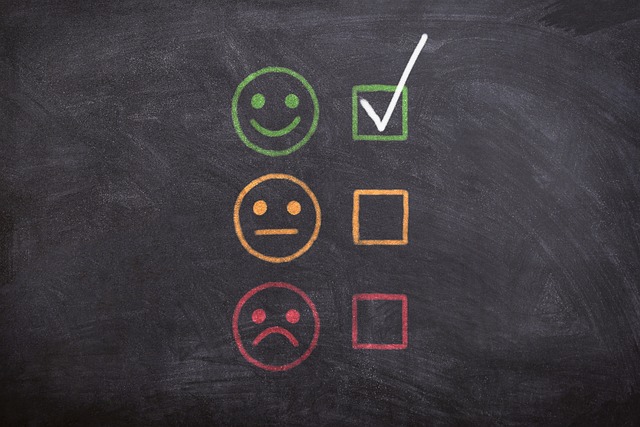Understanding the Importance of Social Media Analytics
In today’s digital age, social media platforms have transformed from simple communication tools to powerful marketing avenues. Every post, share, like, and comment contributes to an immense amount of data, creating a goldmine of information that businesses can leverage. This is where social media analytics come into play. By examining this data methodically, companies can uncover insights about their audience and performance. These insights can significantly inform their marketing strategy, ultimately leading to better engagement and increased conversions.
Understanding what social media analytics entails is crucial. It encompasses the collection, measurement, and interpretation of data from social media platforms. This data helps in gauging audience behavior and preferences. For instance, analyzing metrics such as likes, shares, comments, and follower growth can shed light on what resonates most with your audience. Furthermore, companies can examine how their posts perform at different times and on various days. By doing so, they can tailor their content scheduling to maximize reach and engagement. Being aware of such analytics empowers a business to make informed decisions, ensuring that their resources are funneled into strategies that yield the best results.
Setting Goals and Objectives for Analytics
Prior to diving into the sea of data that social media analytics offers, it’s essential to establish clear goals and objectives. What does your business aim to achieve through social media? Whether it’s increased brand awareness, lead generation, or customer retention, pinpointing these objectives will guide your analytics efforts. Each social media platform offers unique insights, so understanding what you want to measure helps in selecting the right metrics.
For instance, if your goal is to boost brand visibility, focus your analytics on reach and impressions. If customer engagement is your priority, metrics such as comments, shares, and reactions will be more telling. Setting SMART goals—specific, measurable, achievable, relevant, and time-bound—provides a structured approach to your data analysis. By keeping your objectives front and center, you can align your social media efforts effectively, ensuring that your strategies pivot around the insights derived from social media analytics.
Choosing the Right Tools for Social Media Analytics
Armed with clear objectives, the next step is selecting the right tools to carry out your social media analytics. The market is flooded with various tools, both free and paid. Platforms like Google Analytics provide insights into web traffic from social media sources, while tools like Hootsuite or Buffer offer a more comprehensive view of engagement across multiple social profiles. On the other hand, social media platforms themselves, such as Facebook Insights or Twitter Analytics, offer native options that are user-friendly and insightful.
When choosing a tool, consider factors like ease of use, the depth of analysis offered, and pricing. Make sure the tool aligns with your goals. For small businesses, free tools may suffice; however, as the organization grows, investing in premium analytics tools can provide deeper insights and facilitate better decision-making. For instance, some advanced tools offer sentiment analysis, which can help ascertain how people feel about your brand. Pairing this data with demographic insights can inform your strategy on targeted content creation. Investing the time to choose the correct analytics tools can revolutionize how you approach your social media strategy.
Analyzing the Data and Gleaning Insights
Once you gather data using the chosen tools, the fun part begins – analyzing the information to draw actionable insights. Start by identifying trends. Look at what type of content your audience engages with the most. This could be videos, blog posts, infographics, or promotional content. Pay attention to the engagement rates over time. If a particular post type generates high engagement, consider increasing its frequency. Moreover, note the times when your audience is most active. This could guide when to post for maximum reach and engagement.
Diving deeper into the numbers can reveal unexpected patterns. For example, you might find that your posts about certain topics generate more interest. This information is invaluable; it suggests that you should invest more resources into creating similar content. You can also explore audience demographics data to tailor your content more effectively. If you find that the majority of your followers are young professionals, your messaging and visual content can reflect their preferences and lifestyle. Continually iterating on these insights can streamline your social media strategy and foster a deeper connection with your audience.
Implementing Changes to Your Strategy
Once insights from your social media analytics are on the table, it’s time to implement change. However, shifting gears doesn’t mean abandoning your existing strategy altogether. Instead, use insights to fine-tune your current efforts. For instance, if your analysis indicates that video content vastly outperforms static posts, consider reallocating resources towards video creation. It may involve training your team in video marketing or seeking external help.
Another adjustment could include modifying your posting schedule based on when your audience is most active. If your analytics show spikes in engagement on weekends, it may be wise to center your content releases around that time. Also, continuously testing and experimenting is vital. A/B testing posts with varying formats, headlines, or call-to-actions can provide clearer insights into which elements resonate best with your audience. Be proactive about adjusting your strategy based on what the analytics reveal, and don’t hesitate to revisit and revise your goals in response to new information.
Monitoring Progress and Making Data-Driven Decisions
Social media analytics isn’t a one-time endeavor. It’s an ongoing process that requires continuous monitoring and adaptation. Regularly check your analytics to ensure your strategies remain relevant. As trends shift—and they surely will—your approach should evolve too. Consider setting up regular reporting intervals. Weekly or monthly reports can help track your progress against your initial goals. This way, you can pinpoint what’s working and what isn’t.
Don’t forget to engage with your community as well. Analytics not only tell you what content works but also provide insights into the conversations happening around your brand. Engage with your audience’s comments and feedback, which can often provide qualitative data that complements your numerical analytics. By doing so, you create a dialogue that further enhances brand loyalty. The fusion of qualitative and quantitative insights will inform your decision-making, allowing you to pivot strategies effectively with a nuanced understanding of your audience.
Integrating Social Media Analytics with Broader Marketing Strategies
Lastly, consider how social media analytics can integrate with your broader marketing approach. Social media is just one facet of your marketing strategy. Analyzing how social media performance ties in with email marketing, content marketing, and even offline promotions can inform an aligned overall strategy. If your social media campaigns drive low website traffic, it may signal a disconnect. Optimization of these elements can lead to complete harmony in your marketing efforts.
Furthermore, ensure that your analytics reflect company-wide goals. For instance, if your company aims to boost customer retention, align your social media strategies to support that aim by nurturing customer relationships through engaging content. Convert insights into actionable proposals for cross-departmental meetings. Working collaboratively ensures that everyone in the organization understands how social media plays into the larger picture, fostering a unified approach towards achieving overarching business objectives.
Frequently Asked Questions
- 1. What is social media analytics?
- Social media analytics involves the collection and analysis of data from social media platforms to understand audience behavior, engagement metrics, and content performance. It helps inform marketing strategies based on actual user interactions and preferences.
- 2. How can social media analytics inform my marketing strategy?
- By analyzing metrics such as likes, shares, and comments, and understanding audience demographics, businesses can tailor their content. This means knowing what type of posts resonate with followers, when they engage most, and what actions lead to conversions, allowing for data-driven decisions.
- 3. What tools are available for social media analytics?
- There are numerous tools, including Google Analytics, Hootsuite, Buffer, and platform-specific options like Facebook Insights and Twitter Analytics. Each tool has its features, so choose one that aligns with your business goals and technical expertise.
- 4. How often should I review my social media analytics?
- Regular reviews are vital. Consider checking your metrics weekly for immediate responsiveness or conducting a more thorough analysis monthly. This helps in monitoring progress and making timely adjustments to strategies.
- 5. Can social media analytics impact customer engagement?
- Absolutely! By understanding what content performs best and when users are most active, businesses can create more engaging and relevant posts. This ultimately enhances the relationship between the brand and its audience, fostering loyalty and interaction.



